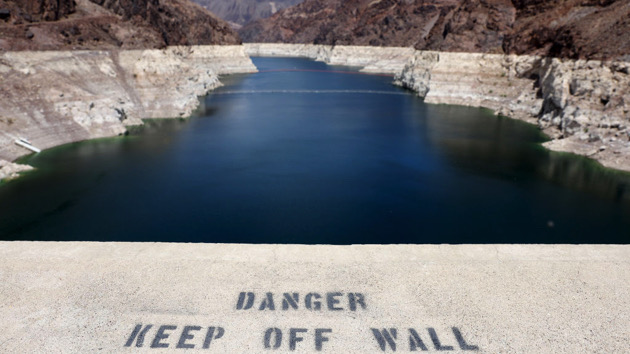
(NEW YORK) — Some of the most important water sources in the Western U.S. are drying up as a decades-long megadrought continues to intensify and temperatures steadily rise as a result of climate change.
And as the commodity becomes more precious, residents could soon see an uptick in their water bills, experts tell ABC News.
Water levels have gotten so low in Lake Mead, the nation’s largest reservoir, that human remains have been discovered among the receding waters. The Colorado River, a major freshwater source for more 40 million people in seven southwestern U.S. states and parts of northern Mexico, has lost 20% of its water levels over the past 22 years, making it the most endangered river in the country.
As global temperatures continue to rise, causing the drought conditions in the West to persist, ensuring an ample supply of water to sustain communities will continue to be a challenge, experts say. Temperatures are currently at the hottest the planet has experienced in the past 2,000 years, according to NASA.
The first step in conserving water is for water utility companies to implement drought plans in stages, the first being asking for voluntary restraint by residents, Ed Osann, director of national water use efficiency for the nonprofit Natural Resources Defense Council, told ABC News.
Calls for cutbacks on household water usage are getting louder. Last month, California Gov. Gavin Newsom implored the state’s largest water suppliers to combat drought and better engage their customers to ensure all Californians are doing their part to save water. Beginning June 1, Los Angeles residents were limited to two-days-per-week outdoor watering schedules.
On Thursday, the city of San Diego implemented new water-saving restrictions, which include prohibiting irrigation during and within 48 hours of a rain event and prohibiting the washing of vehicles at residences, although washing is still permitted at commercial car washes.
The conservation actions are part of Level 2 of the water shortage contingency plan that all urban water suppliers must implement, following Newsom’s announcement on May 23. But, the repeated warnings in recent months do not seem to be resonating. In coastal Southern California, water use had increased by more than 25% in April, according to data released last week by the California State Water Resources Control Board, the Los Angeles Times reported.
If those calls for conservation continue to go unheeded, utility companies could have no choice by to raise the rates of water, Newsha Ajami, hydrologist and director of urban water policy for Stanford University’s Water in the West initiative, told ABC News.
Water prices have been rising steadily for the past 20 years, Osann said.
But, water is still “underpriced and undervalued,” Ajami said, adding that the increase in cost could prove to be the most effective deterrent for using an excess of water. With more than 85% of the West experiencing drought conditions, according to the U.S. Drought Monitor, officials can not continue to hope for such conditions to dissipate, year after year, she said.
Ajami described the current water sector as “antiquated in many ways,” because the business models, many implemented in the 1900s, were created “during a different time, under a different reality.” A time when there was not only a lot more water, but when decision-makers had a “very limiting understanding” of the consequences of the laws and infrastructures they were creating, Ajami said.
“We build all these dams and infrastructure, assuming the hydroclimatic conditions would withhold, right?” Ajami said. But the water authorities of the past did not foresee droughts that continued for decades on end, she added.
This is why before water utility companies begin to raise rates, they need to “figure out how we create a business model that is sustainable in this day and age,” Ajami said.
“Because if we don’t do that, by raising rates and not having the right business model in place, we can actually leave some people behind,” she said.
Raising water rates is especially controversial for low-income communities, who may not be able to afford the most water-efficient appliances, such as dishwashers and washing machines, Pablo Ortiz, climate and waters scientist at the Union of Concerned Scientists, told ABC News. Rate increases, and whether there are programs available to help those who cannot afford their bills, will vary among utility companies, the experts said.
Another concern for researchers, as water supplies in reservoirs are depleted, is that municipalities may return to groundwater to fulfill their water needs, Ortiz said.
“Groundwater is often used as a buffer when there is not enough available surface water,” Ortiz said, adding that California’s century-long relationship with extracting groundwater has left well levels at the lowest they have ever seen.
However, raising prices is more than a deterrent, but a way for utilities to maintain a cashflow throughout a period where there is an intentional decline in use, Osann said.
That way, utilities can ensure operations during a time when revenue is down, he added.
“That helps manage water during the drought; it helps maintain the fiscal soundness of the utility system, and it protects the customers against getting a ‘gotcha rate’ increase after a drought is over,” Osann said.
Copyright © 2022, ABC Audio. All rights reserved.
